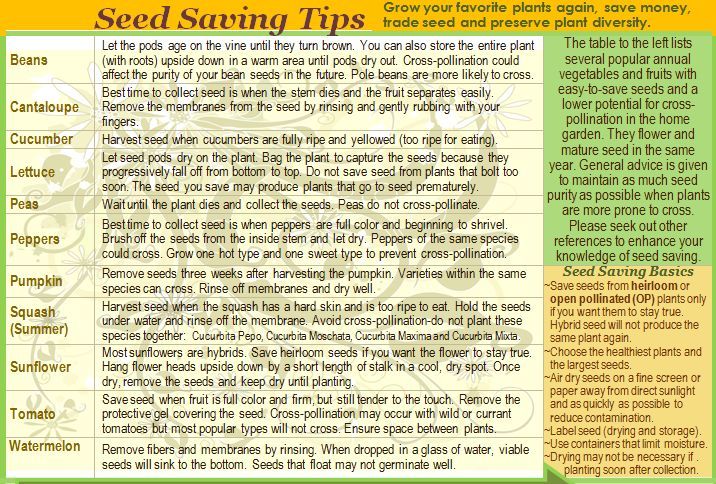Here is a collection of gardening seed saving tips helping to find the easiest to save and the best method of seed saving. Good healthy seeds are undoubtedly one of the most important materials for homesteading gardeners.

After saving your seeds, it is important to keep them alive for future use. Newly har
vested seeds should not be immediately stored in a plastic bag because the moisture content of the seed is still high and will lead to deterioration.
Before keeping seeds in the storage, seeds should be dried. Keep in mind that seeds
are alive but they breathe very slowly. To keep seed alive for a long time, keep them
under low temperature and low humidity during storage.
Humidity: Seeds will absorb moisture from the storage environment. High humidity levels cause seed to increase their respiration rate and use their stored energy.
Make sure your seeds are dry enough (seed moisture content around 7–8%) before storage, and keep them in an air tight container, such as a screw-top jar.
Darkness: Exposure to sunlight will shorten the life of seeds. Use dark-color jars or nontransparent containers to protect seed from sunlight. If using clear jars, place them
in paper bags to shield out sunlight.
Temperature: For most vegetable seeds, a temperature below 15 °C is ideal. You can
keep the seeds in an air-tight container and place the container in the refrigerator. For
short-term storage, keep the seeds in a cool and shady dry place.

Most vegetable seeds can be safely stored for at least three to five years. Place seeds in manila envelopes, cloth or mesh bags, plastic containers, or foil envelopes. The
best containers are air-tight, such as a sealed glass jar, metal can, or foil envelope. Label each container carefully. Note the names of the line or variety, the year, and any other information you feel is valuable. Store seeds in a cool, dry place.
You may enjoy trading some of your seeds with other like minded gardeners to bring variety into your garden.
.
.

